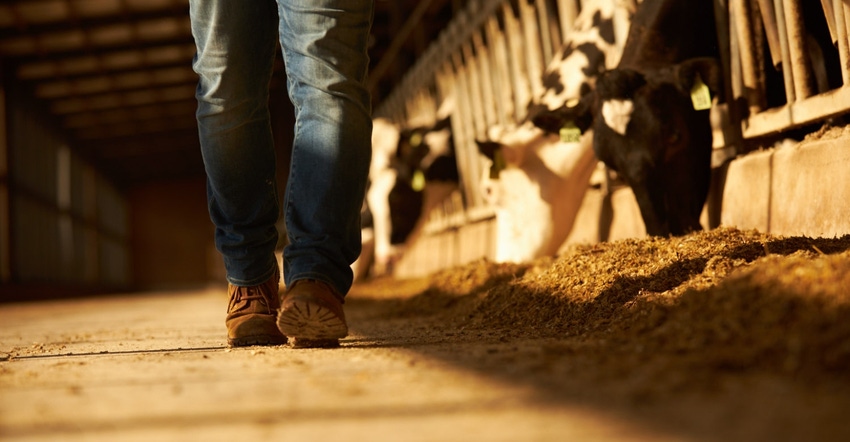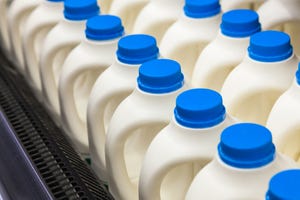To protect fresh cows from subclinical hypocalcemia and other disorders, it takes a two-pronged approach.

Sponsored Content
Today’s dairy cows produce four times more milk than cows did a century ago.1 With this dramatic increase in production comes a greater demand for calcium, especially for colostrum and milk directly after calving.
To compensate, fresh cows must rapidly mobilize calcium from their bones to help maintain important muscle, nerve and immune function. Severe deficiencies can lead to clinical hypocalcemia, or milk fever. More commonly, subclinical hypocalcemia occurs, a condition in which cows appear to be healthy but have low blood calcium.
“We’re managing and breeding for very high milk production, and hypocalcemia is a problem associated with that,” advised Mark van der List, DVM, Boehringer Ingelheim. “It’s a problem that probably won’t ever be eliminated, so we need to minimize the effects of it.”
Subclinical hypocalcemia can have a domino effect, putting fresh cows at risk for other disorders such as retained placentas, displaced abomasa, ketosis and metritis.2 “It’s very important to manage subclinical hypocalcemia because it’s associated with so many other health problems,” said Dr. van der List.
Currently, effective strategies for preventing hypocalcemia involve feeding a ration with a negative dietary cation-anion difference (DCAD) in the three weeks prior to calving and supplementing with oral calcium directly after calving.
Prepare her with the right diet
Rations that contain more cations (ions with a positive charge), such as sodium and potassium, can actually increase the cow’s blood pH, or make it more alkaline. This can put cows at greater risk for milk fever if these rations are fed in the weeks prior to calving.
But adding anions (ions with a negative charge), such as chloride and sulfur, to the ration helps lower the blood pH, or make it more acidic. This can actually help stimulate the release of calcium from the bones and absorption of calcium from the intestines.
“Basically, creating a negative DCAD promotes calcium resorption from the bone prior to calving, so after calving, the blood calcium stays higher,” explained Dr. van der List. “This has dramatically improved the milk fever situation — we just don’t see it at the same rates we used to.”
Producers should rely on their nutritionists or veterinarians to create the right DCAD formula. It’s important to strike the right balance: There should be enough anionic salts to achieve a negative DCAD, but not so much that the ration loses palatability, and thus interferes with feed intake.
How can producers know if the diet is working? “Ideally, the urine pH should be tested in about 10 cows weekly, to make sure it’s within the recommended range,” asserted Dr. van der List. For Holsteins, that’s a pH between 6.2 and 6.8 and for Jersey cows it should fall between about 5.8 and 6.3.3 If the urine pH is above 7, producers should check to see if there’s an overcrowding issue or other problem.
Supplement calcium at freshening
Although producers can feed rations formulated for a negative DCAD, and make sure the urinary pH remains low, cows can still end up in trouble. “About 50 to 80% of the herds on these rations still experience subclinical hypocalcemia, in my experience,” estimated Dr. van der List.
Herd veterinarians can perform blood tests to determine if a subclinical hypocalcemia problem exists. “In that situation, it pays to supplement cows with oral calcium, especially those in second lactation and higher.”
The lowest blood calcium levels in older cows tend to occur about 12 to 24 hours after calving.3,4 Providing an oral supplement at freshening can help bolster blood calcium levels when it’s needed most. Ideally, producers should choose an oral product that includes calcium chloride, which can be rapidly absorbed, as well as calcium sulfate for sustained calcium release over the post-calving period.
“Subclinical hypocalcemia can be due to poor management, but it can also happen with good management,” stated Dr. van der List. “One of the reasons these cows experience a dip in calcium is because they’re suddenly producing so much milk, which is what we manage and breed for.”
A solid transition-cow management program, including rations formulated for negative DCAD and oral calcium supplementation, can help producers minimize subclinical hypocalcemia and its associated disorders for better fresh cow health.
1 VandeHaar MJ, St-Pierre N. Major advances in nutrition: relevance to the sustainability of the dairy industry. J Dairy Sci 2006;89(4):1280–1291.
2 Rodriguez EM, Aris A, Back A. Associations between subclinical hypocalcemia and postparturient diseases in cows. J Dairy Sci 2017;100(9):7427–7434.
3 Goff JP. The monitoring, prevention and treatment of milk fever and subclinical hypocalcemia in dairy cows. Vet J 2008;176(1):50–57.
4 Kimura K, Reinhardt TA and Goff JP. Parturition and hypocalcemia blunt calcium signals in immune cells of dairy cattle. J Dairy Sci 2006;89(7):2588–2595.
©2020 Boehringer Ingelheim Animal Health USA Inc. Duluth, GA. All Rights Reserved. US-BOV-0263-2020
About the Author(s)
You May Also Like



